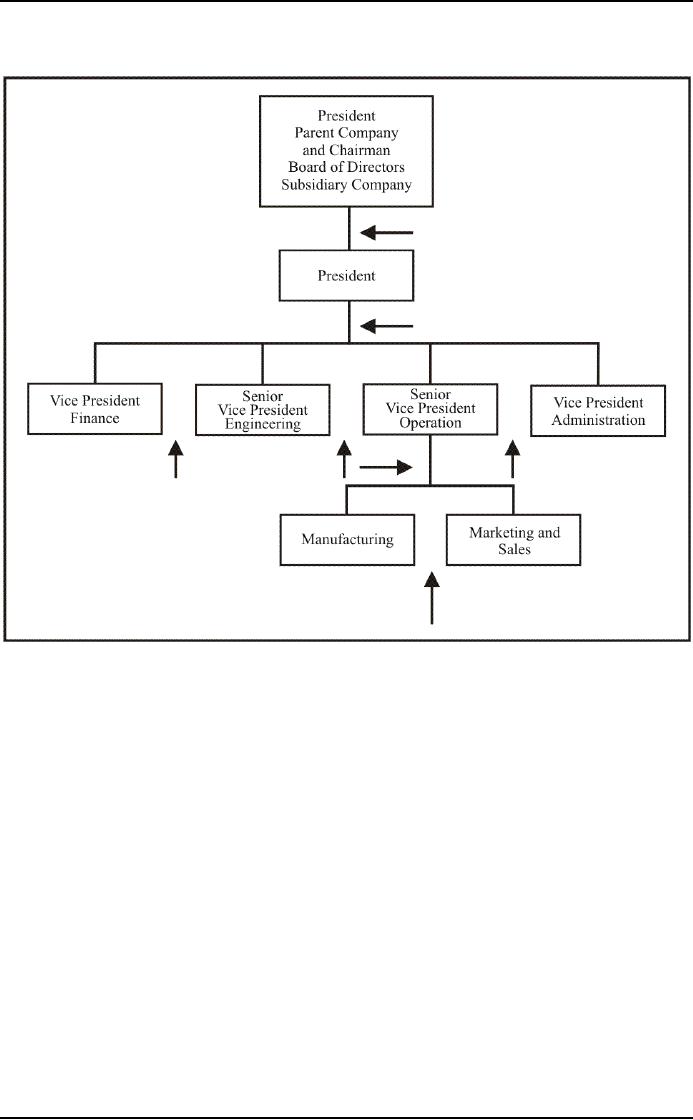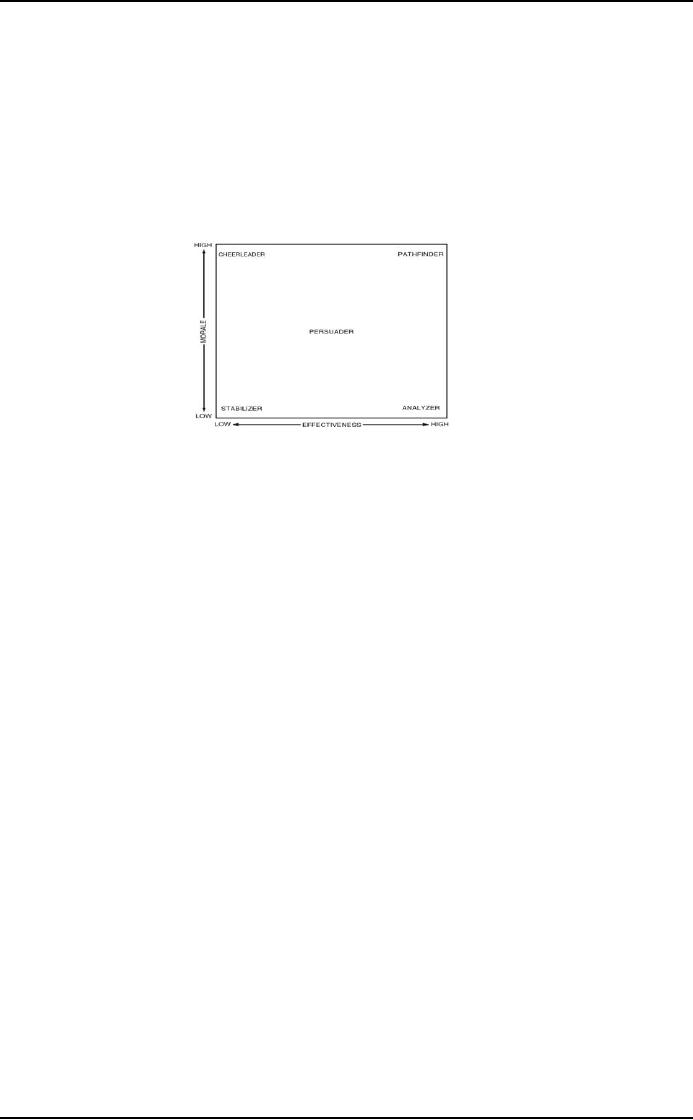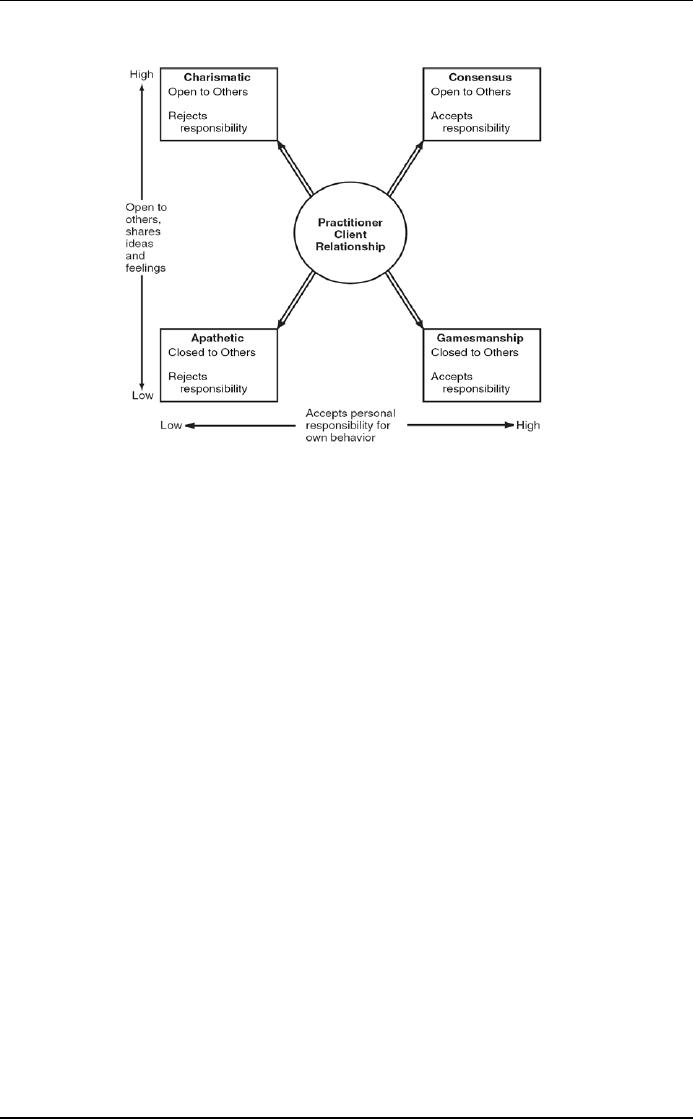 |

Organization
Development MGMT
628
VU
Lesson
11
Creating
a Climate for
Change
Most
OD practitioners would agree that an open
give-and-take relationship with the
client is desirable. To
some
extent this depends on the ability of the
practitioner to form relationships of
openness and trust.
Good
relationships do not fit into a
formula or equation, but OD practitioners
have noted a number of
recognizable
characteristics of which the practitioner
may be aware. "The change
agent should act
congruently,
in accordance with the values he or
she is attempting to superimpose upon the
client system's
value
system. To use an old
expression, the practitioner should
practice what he or she preaches.
The
practitioner
must think and act in
ways that will create
and enhance a positive
climate for participation
and
learning.
The
basic value system of the OD
practitioner may not be compatible
with the organization's culture. As a
result,
there may be conflicts between the
value systems of the practitioner
and the client system.
An
assessment
of the degree of difference and the
likelihood of working these
differences through should be
part
of the OD practitioner's initial intervention.
The practitioner may desire
to create a relationship of
openness,
authenticity, and trust. The
client system managers, however,
may tend not to be open, may
have
learned
not to behave authentically, and
may even feel threatened by an
exploration of feelings or
confrontation
by the practitioner; the practitioner may
have reservations about the probability
of a
successful
program. The practitioner
also examines the degree of
conflict and collaboration
between
organization
units and needs to be aware of this to
avoid being party to any existing
conflicts. "One of the
most
frequent forms of resistance to change,"
comments OD authority Ronald Lippitt,
"is the perception
by
certain subgroups, that the consultant is
more closely related to
other subgroups and is `on
their side' in
any
conflict of interests."
Who
is Client?
One
may say, the client
is....
1.
Company president
2.
Top management group
3.
Employee relations person
4.
Total company
5.
Parent corporation
6.
All of the above
7.
None of the above.
The
correct answer is (7), "none
of the above." The client in OD consultation is
never one individual,
regardless
of position or role, or any particular group,
team, or subsystem of the organization, or
any
combination
thereof.

Organization
Development MGMT
628
VU
The
client is the relationship and/or
interface between individuals and units
within and related to
the
system. The
arrows in the figure 12 depict the true
client.
Figure:
12
The
degree to which a consultant is effective is a
function of how capable he or
she is at maintaining a
certain
social distance between self
and other individuals in the
client organization and its operating on
the
boundaries
of units rather than exclusively within
them. In these ways, the consultant
can more readily
maintain
an objective stance between persons
and units in conflict rather than being
with one or the
other.
OD
Practitioner Styles:
The
OD practitioner is the person who
initiates, stimulates, or facilitates a
change program, and may
come
from
inside or outside the organization.
Change begins with the
intervention of the practitioner in
the
system
to be changed. Intervention
refers
to the practitioner's entry into the
client stem and
includes
several
different roles and
activities.
Practitioners,
be they internal or external, have a
variety of practitioner styles or
approaches. One way to
view
the styles is based on the degree of
emphasis the practitioner places
upon two interrelated goals
or
dimensions
of the change process. One of the goals
is effectiveness the degree of emphasis
upon goal
accomplishment.
The other goal is morale,
the degree of emphasis upon
relationships and
participant
satisfaction.
Based
upon the two dimensions of
accomplishing goals and
member satisfaction, five
different types of
practitioner
styles or roles can be
identified (see Figure
13).
The
Stabilizer Style:
The
goal of the stabilizer
style is
neither effectiveness nor
participant satisfaction. Rather the
practitioner
is
trying to keep from rocking
the boat and to maintain a low
profile. The underlying
motivation is often
survival,
or merely following the directives of
top management. Such a role
is typically found in
large
organizations
where development programs may be
part of the staff function and
are not highly
regarded

Organization
Development MGMT
628
VU
by
top management. This style is
usually forced upon the practitioner by
organizational pressures, so that
the
practitioner has learned to
conform and to suppress any
other motivations.
The
Cheerleader Style:
The
cheerleader
style places
emphasis on the satisfaction of organization
members and is
chiefly
concerned
with employee motivation and
morale. The cheerleader
practitioner seeks warm
working
relationships
and in general is more comfortable in
non confrontational situations.
Effectiveness per se is
not
emphasized. The assumption being
that if member satisfaction is
high, effectiveness will
also be high.
Unfortunately,
there is a great deal of
evidence that contradicts
these assumptions. The
cheerleader style
strongly
minimizes differences and
maintains harmony.
Figure:
13: Practitioner Styles
The
Analyzer Style:
The
analyzer
style places
great emphasis on efficiency, and
gives little emphasis to
member satisfaction.
The
analyzer feels most comfortable
with a rational assessment of
problem and assumes that the
facts will
lead
to a solution. Practitioners of this type
may be quite confrontational,
usually relying on authority to
resolve
conflicts and on rational problem-solving
processes.
The
analyzer style has a background of
specialized expertise, knowledge, and
experience applicable to the
solution
of specific problems. The
client needs to have a
problem solved, a service
performed or a study
made;
the analyzer practitioner takes
responsibility for providing these
functions. This style is based on
the
belief
that the client does not
need to know or cannot learn the
skills to solve its
problems. The success
of
the
practitioner is largely dependent on the
client's having properly diagnosed
its problem and called in
the
right
kind of practitioner.
The
Persuader Style:
The
persuader
style focuses
on dimensions, effectiveness and
morale, yet optimizes
neither. Such a style
provides
a relatively low-risk strategy, yet
avoids direct confrontation with
other forces. This approach
may
be
used when the practitioner has
little power or leverage relative to
other participants. It is
motivated
primarily
by a desire to satisfy, that
is, to achieve something
that is "good enough." A
great deal of effort
is
applied
in attempting to satisfy the different
forces, thus gaining a majority
bloc of support for
prepared
changes.
The resulting change program is often
watered down or weakened to the
point where organization
improvement
is unlikely.
The
Pathfinder Style:
The
pathfinder
style seeks
both a high degree of
effectiveness and a high
degree of member
satisfaction,
believing
that greater effectiveness is
possible when all members
are involved and
problem-solving is done
through
teamwork. There is awareness that
confrontation and conflict
are often a means to a
more
effective
organization and to more satisfied
individual members. The
pathfinder approach
uses
collaborative
problem solving and challenges the
underlying patterns of member
behavior. Harold J,
Leavitt
uses
this term to refer to developing a sense of value
and vision. The pathfinder
practitioner helps the
organization
to focus on its most critical
issues and questions.
A
survey of about 1,000 OD practitioners
found that listening, integrity,
and organizational diagnosis
were
rated
as the most important OD skills.
The pathfinder practitioner
uses these skills to give the client
new
insights
into its activities and to
help the client system
determine how it wishes to
change and how it
might
go
about implement changes. The practitioner
rarely informs or instructs the
client system, but instead
tries
to
discover client system
problems and to challenge the
underlying patterns of behavior of
organization
members.
The pathfinder practitioner
focuses on six processes
essential for effective
organization

Organization
Development MGMT
628
VU
performance:
(1) communication, (2) member
role and functions in
groups, (3) group
problem-solving and
decision-making,
(4) group norms and
growth, (5) leadership and
authority, and (ft)
inter-group
cooperation
a competition.
We
have identified five
different practitioner styles in this
section. You will have an
opportunity to find
out
where
your own style fits in this
classification system. Most
organizational problems are complex
situations,
however,
and may not neatly
fit with any one
change approach but will
depend upon the practitioner,
the
nature
of the problem, and the organizational
climate.
In
summary, these five
practitioner styles are not
mutually exclusive. All the
styles can be effective, and
they
are
interrelated. A practitioner may
transition from one style to
another to meet changing client
system
needs
and deal with diverse
situations. Frequently, some
combination of the styles may be
applied.
Practitioner-Client
Relationship Modes:
Eric
H. Neilson has identified
several basic dimensions in the
practitioner-client relationship that can
be
used
as indicators of the climate for change.
In order to collaboratively change the
organization's culture,
members
need to (1) share their
ideas, assumptions, perceptions,
and feelings, and (2)
accept personal
responsibility
for their own behavior.
Based upon these two
dimensions, Neilsen has identified
four
possible
modes in the practitioner-client relationship.
(See Figure 14)
The
apathetic mode:
Members keep their true
ideas about self-fulfillment and
organization effectiveness
to
themselves. They assume that
sharing this information will
not make any difference, so
why bother?
They
follow established routines, take no
responsibility for their actions,
and simply do as they are
told.
They
relate to the practitioner in the same
way, assuming that higher
authority has sanctioned the
change
hut
viewing it with
skepticism.
The
gamesmanship mode:
Members keep their true
feelings about self-
fulfillment and organizational
effectiveness
to themselves, under the assumption that
sharing information may threaten
personally desired
outcomes,
They make their own
decisions about how to behave,
thus taking responsibility for
their
behavior.
This may include conforming
outwardly to any decision-making
procedure hut manipulating
strategic
factors to gain personal
goals. Members may favor
change if they can see ways in
which it can
serve
their personal
interest.
The
charismatic mode: A
limited number of members openly
share ideas and feelings
with the rest,
based
on perceptions of leadership. The
followers are looking for
cues from their leaders, so
responsibility
is
low for most members.
Members view the change
process as desirable if the leaders
approve, but they
rely
on the leaders to interpret the
results.
The
consensus mode: Members
continuously share perceptions and
feelings openly both on
self-
fulfillment
and organizational effectiveness.
Personal viewpoints are seen
as relevant to organization
functioning
and are expressed. Decisions
are made and differences
arc resolved through the
sharing of
viewpoints,
this process involves both
sharing of data and maintaining
one's responsibility for
actions.
Members
see the OD process as consistent with
their way of operating and
find the results interesting
and
useful.

Organization
Development MGMT
628
VU
Figure
14: Four Practitioner-Client Relationship
Modes
The
practitioner's attitudes and behavior
make it possible for the
client to create a climate
where feelings
about
the client system can be freely
and honestly expressed. The
practitioner also has the
ability to listen
effectively
and express ideas clearly
and concisely. The practitioner is
honest with the client,
because
facades
have no place in the relationship. By operating
based on power equalization, the
practitioner
ensures
that the power differential between
practitioner and client is not
too great, for otherwise it
will be
difficult
to develop a collaborative relationship. This is particularly true
with internal practitioners, who
may
be
in a subordinate position in the organization's power
structure? The practitioner
also makes certain
that
all
the key parties in the client
system are involved in the OD program to
some extent. Thee
practitioner
must
determine to how much
involvement by different individuals or
groups is appropriate. The
outcome
of
ignoring key people is increased
resistance and probable ineffectiveness
in the change program.
These
are not the only dimensions
that are involved in a complex
practitioner-client relationship, but
they
have
been discussed here to
provide the beginning practitioner with
an awareness of some of the
important
dimensions
that should be examined and
considered. The practitioner
must keep in mind that
this
relationship
is analogous to one's impact on the
total system. The practitioner's
behavior will actually be
a
model
for the organization between organization
members. In attempting to create a
climate of openness
and
collaboration between organization
members and departments, one
strives to develop personal
relationships
based on similar qualities. A
good relationship increases the
probability of a successful OD
program.
A tenuous or superficial relationship increases the
probability that the OD program will
be
ineffective
or unsuccessful.
Important
dimensions in practitioner-client relationship:
�
The
practitioner's attitudes and behavior
make it possible for the
client to create a climate
where
feelings
about the client system can be freely
and honestly expressed.
�
Ability
to listen effectively and express
ideas clearly and
concisely.
�
The
practitioner is honest with the client,
because facades have no
place in the relationship.
�
By operating
based on power equalization, - the practitioner
ensures that the power
differential
between
practitioner and client is not
too great, for otherwise it
will be difficult to develop a
collaborative
relationship.
�
This is
particularly true with internal
practitioners, who may be in a subordinate
position in the
organization's
power structure?
�
The
practitioner also makes
certain that all the key
parties in the client system are
involved in the
OD
program to some extent. The practitioner
must determine to how much
involvement by
different
individuals or groups is appropriate. The
outcome of ignoring key people is
increased
resistance
and probable ineffectiveness in the
change program.

Organization
Development MGMT
628
VU
�
A
good relationship increases the
probability of a successful OD program. A
superficial
relationship
increases the probability that the OD
program will be ineffective or
unsuccessful.
Case:
The Grayson Chemical
Company
The
Grayson Chemical Company manufactured
industrial chemicals for
sale to other industrial
companies.
The
company was about 40 years
old and had been
run by a stable management in
which there had
only
been
two presidents. Within the
past few years, however, declining
earnings and sales had
brought pressure
from
the board of directors, investment bankers,
and stockholder groups to name a
new president. The
company
had become increasingly
stagnant although at Grayson they refer to it as
conservative and
had
steadily
lost market standing and
profitability. Finally, the board decided
to go outside the company to
find
a
new CEO and was
able to recruit a dynamic manager
from another major corporation, Tom
Baker. Baker
is
47, an MBA, and had helped
build his former company
into a leadership
position.
Baker
was clear about what he needed to
do. He knew that he needed to develop a
top management team
that
could provide the leadership to turn the
company around. Unfortunately, the
situation at Grayson was
not
very favorable.
Decisions
were made by the book or
taken to the next-higher level. Things
were done because "they
have
always
been done this way," and incompetent
managers were often promoted
to high-level jobs.
The
Meeting
Baker
met with three members of
the board, Robert Temple (chairman),
James Allen, and Hartley
Ashford.
Each
had a different bit of
advice to offer.
Robert
Temple said: "Look, Tom,
you can't just get
rid of the old organization if you want
to maintain any
semblance
of morale. Your existing people are
all fairly competent technically, but
it's up to you to develop
performance
goals and motivate them to
achieve these standards.
Make it clear that
achievement will be
rewarded
and that those who
can't hack it will have to
go."
James
Allen, puffing on his pipe, noted:
"Let's face it, Tom;
you need to bring in a new
top management
team.
Probably only six or so, but
people who know what top
performance means, people who
are using
innovative
methods of managing and,
above all, people you trust. That
means people you've worked
with
closely,
from ABC or other companies,
but people you know. You
can't retread the old people,
and you
don't
have time to develop young MBAs, so you
need to bring in your own
team even though it
might
upset
some of the old-timers."
Hartley
Ashford smiled and said:
"Sure, you're going to have to
bring in a new team from the
outside, but
rather
than bring in people you've worked
with before, bring in only
managers with proven track
records.
People
who have proven their
ability to lead, motivate, and
perform from different
industries. This way
you'll
get a synergistic effect from a number of
successful organizations. And the
old people will see
that
favoritism
is not the way to get ahead.
So get a top performance
team. And if you lose a few
old-timers, so
much
the better."
Case
Analysis Form
Name:
____________________________________________
I.
Problems
A.
Macro
1.
____________________________________________________
2.
____________________________________________________
B.
Micro
1.
_____________________________________________________
2.
_____________________________________________________
II.
Causes
1.
_____________________________________________________
2.
_____________________________________________________
3.
_____________________________________________________
III.
Systems affected
1.
Structural
____________________________________________
2.
Psychosocial
__________________________________________.
3.
Technical
______________________________________________
4.
Managerial
_____________________________________________

Organization
Development MGMT
628
VU
5.
Goals and values
__________________________________________
IV.
Alternatives
1.
_________________________________________________________
2.
_________________________________________________________
3.
________________________________________________________
V.
Recommendations
1.
_________________________________________________________
2.
__________________________________________________________
3.
__________________________________________________________
Case
Solution: The Grayson Chemical
Company
I.
Problems:
A.
Macro
1.
Grayson
has become stagnant, failed
to change, and is no longer
competitive.
2.
The
current people at Grayson are not
acceptable to change.
3.
There
is a culture of doing things by the
book.
B.
Micro:
1.
Incompetent
managers promoted.
2.
Board
does not have a consensus of
opinion.
II.
Causes:
1.
Grayson
has not been proactive with
its environment.
2.
Corporate
culture is very resistant to
change.
3.
Board
does not speak with
one voice. So entire organization is
somewhat disorganized in
its
operations--no
clear direction or
focus
III.
Systems affected:
The
entire organization is affected. The organization is
still functioning; however, to be a healthy
company
and
to grow, changes are
needed.
1.
Structural
with major changes, the structure
could be radically altered.
2.
Psychosocial
status quo and contentment
seems to be prevalent among
management.
3.
Technical
though there is evidence
that managers are "fairly"
competent technically, but this
may
not be enough to make the kind of
changes that Grayson
requires.
4.
Managerial
the management currently seems to be comfortable
in their positions and
performance.
The changes that Tom
Baker may initiate would
likely create turmoil in
the
management
ranks.
5.
Goals
and values the system
seems to value putting in
your time and you will
get promoted.
Excellence
in performance is something not
present at Grayson,
but
complacency
seems to be
prevalent.
IV.
Alternatives:
1.
Maintain
status quo--do
nothing.
2.
Develop
a pathfinder style; involve board,
and organization members in renewing
the
company.
3.
Develop
a persuader style and avoid
"rocking the boat" by making gradual or
slow changes.
V.
Recommendations:
Develop
pathfinder style; involve
Entire Corporation in change
process. Establish open
communications
with
board and establish a consensus on what
the board wants/expects/desires. Since
incompetent
managers
have often been promoted,
personnel changes should be made after
thorough analysis of
personnel.
Table of Contents:
- The Challenge for Organizations:The Growth and Relevance of OD
- OD: A Unique Change Strategy:OD consultants utilize a behavioral science base
- What an “ideal” effective, healthy organization would look like?:
- The Evolution of OD:Laboratory Training, Likert Scale, Scoring and analysis,
- The Evolution of OD:Participative Management, Quality of Work Life, Strategic Change
- The Organization Culture:Adjustment to Cultural Norms, Psychological Contracts
- The Nature of Planned Change:Lewin’s Change Model, Case Example: British Airways
- Action Research Model:Termination of the OD Effort, Phases not Steps
- General Model of Planned Change:Entering and Contracting, Magnitude of Change
- The Organization Development Practitioner:External and Internal Practitioners
- Creating a Climate for Change:The Stabilizer Style, The Analyzer Style
- OD Practitioner Skills and Activities:Consultant’s Abilities, Marginality
- Professional Values:Professional Ethics, Ethical Dilemmas, Technical Ineptness
- Entering and Contracting:Clarifying the Organizational Issue, Selecting an OD Practitioner
- Diagnosing Organizations:The Process, The Performance Gap, The Interview Data
- Organization as Open Systems:Equifinality, Diagnosing Organizational Systems
- Diagnosing Organizations:Outputs, Alignment, Analysis
- Diagnosing Groups and Jobs:Design Components, Outputs
- Diagnosing Groups and Jobs:Design Components, Fits
- Collecting and Analyzing Diagnostic information:Methods for Collecting Data, Observations
- Collecting and Analyzing Diagnostic information:Sampling, The Analysis of Data
- Designing Interventions:Readiness for Change, Techno-structural Interventions
- Leading and Managing Change:Motivating Change, The Life Cycle of Resistance to Change
- Leading and managing change:Describing the Core Ideology, Commitment Planning
- Evaluating and Institutionalizing Organization Development Interventions:Measurement
- Evaluating and Institutionalizing Organization Development Interventions:Research Design
- Evaluating and Institutionalizing Organization Development Interventions
- Interpersonal and Group Process Approaches:Group Process
- Interpersonal and Group Process Approaches:Leadership and Authority, Group Interventions
- Interpersonal and Group Process Approaches:Third-Party Interventions
- Interpersonal and Group Process Approaches:Team Building, Team Building Process
- Interpersonal and Group Process Approaches:Team Management Styles
- Organization Process Approaches:Application Stages, Microcosm Groups
- Restructuring Organizations:Structural Design, Process-Based Structures
- Restructuring Organizations:Downsizing, Application Stages, Reengineering
- Employee Involvement:Parallel Structures, Multiple-level committees
- Employee Involvement:Quality Circles, Total Quality Management
- Work Design:The Engineering Approach, Individual Differences, Vertical Loading
- Performance Management:Goal Setting, Management by Objectives, Criticism of MBO
- Developing and Assisting Members:Career Stages, Career Planning, Job Pathing
- Developing and Assisting Members:Culture and Values, Employee Assistance Programs
- Organization and Environment Relationships:Environmental Dimensions, Administrative Responses
- Organization Transformation:Sharing the Vision, Three kinds of Interventions
- The Behavioral Approach:The Deep Assumptions Approach
- Seven Practices of Successful Organizations:Training, Sharing Information